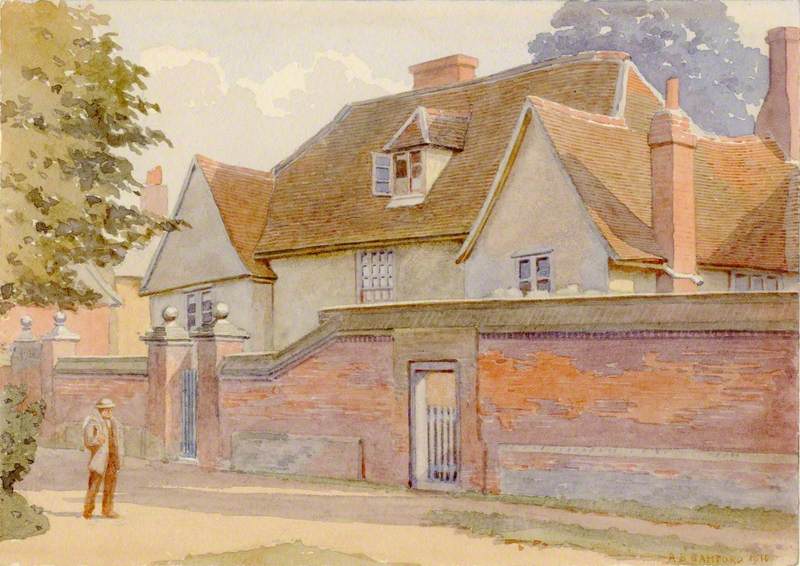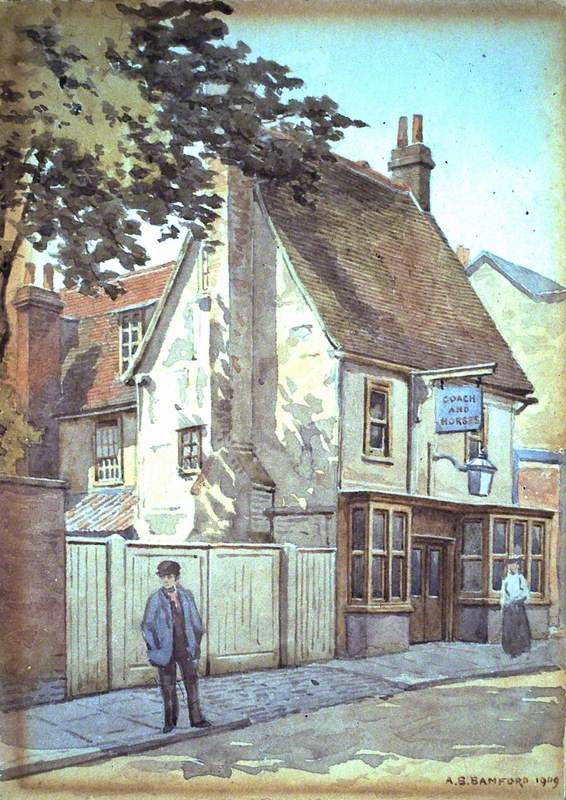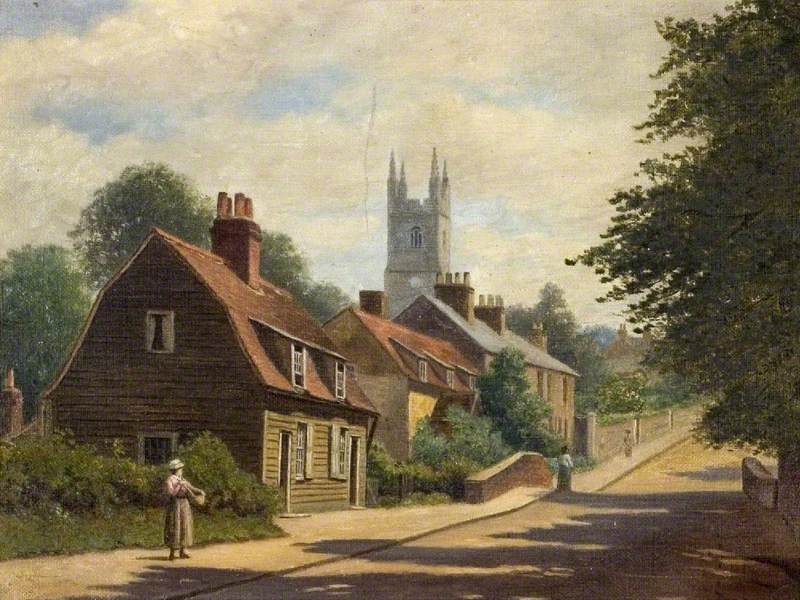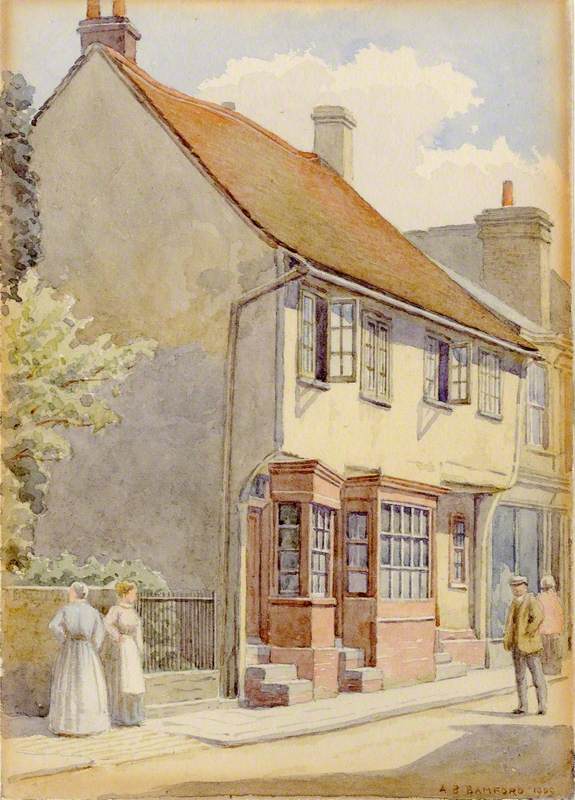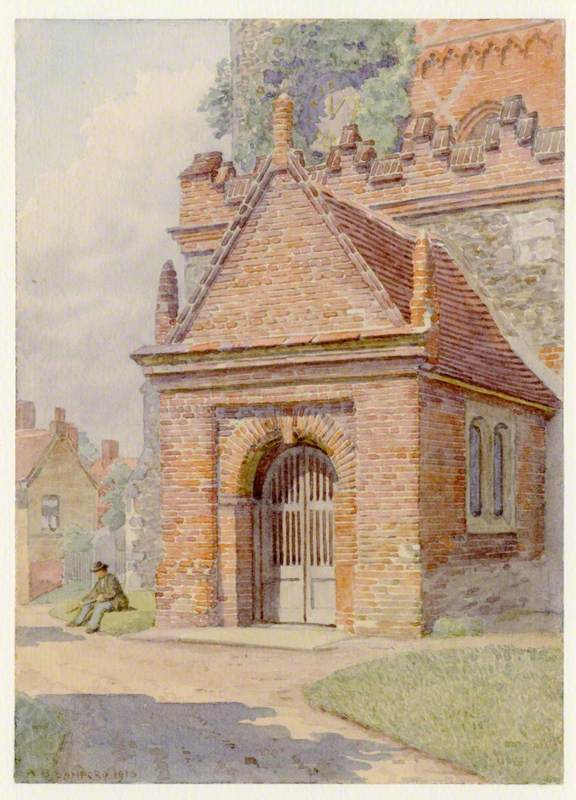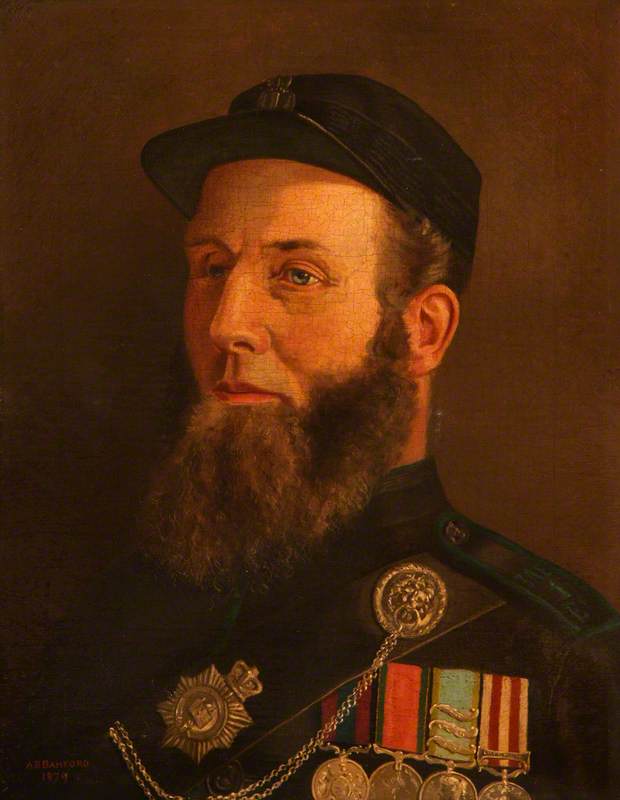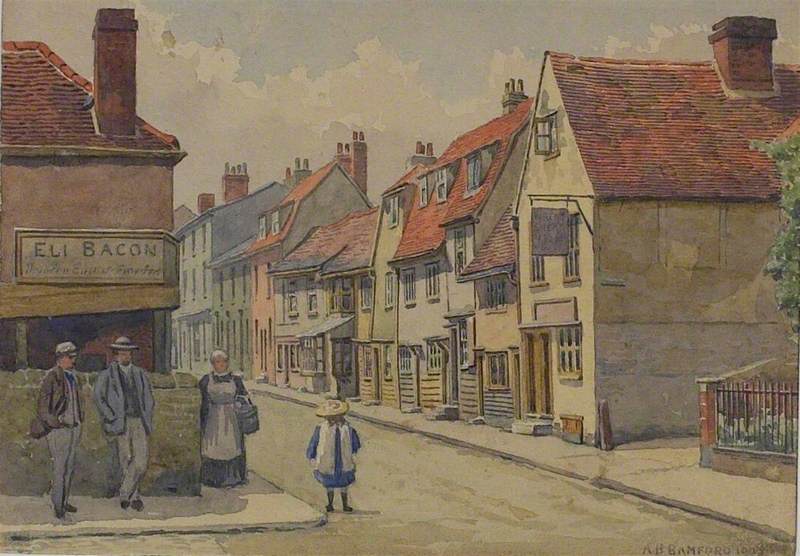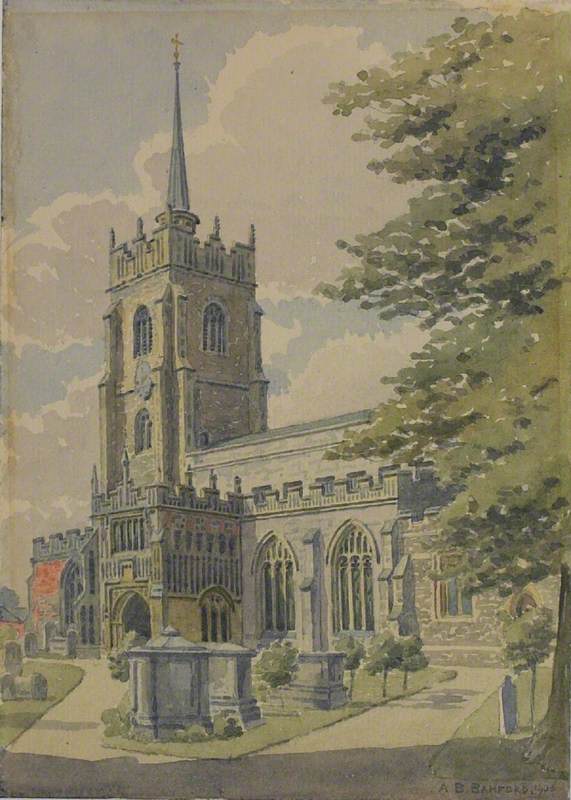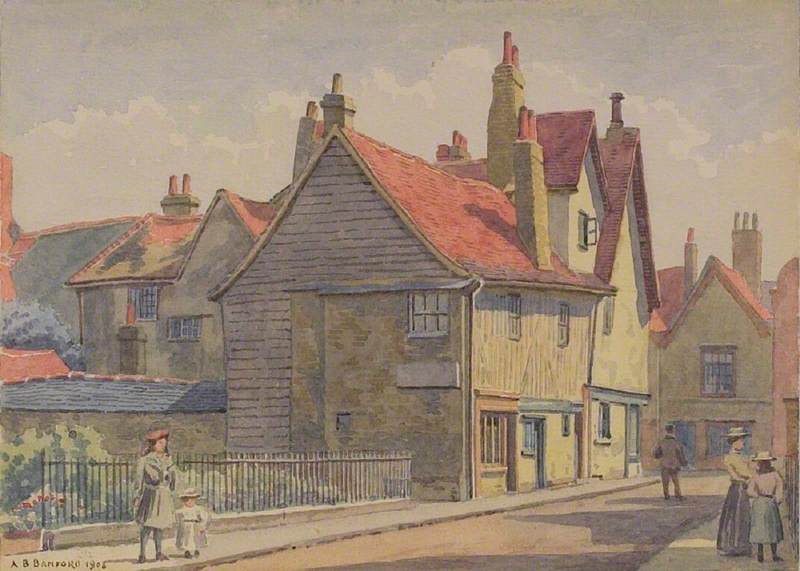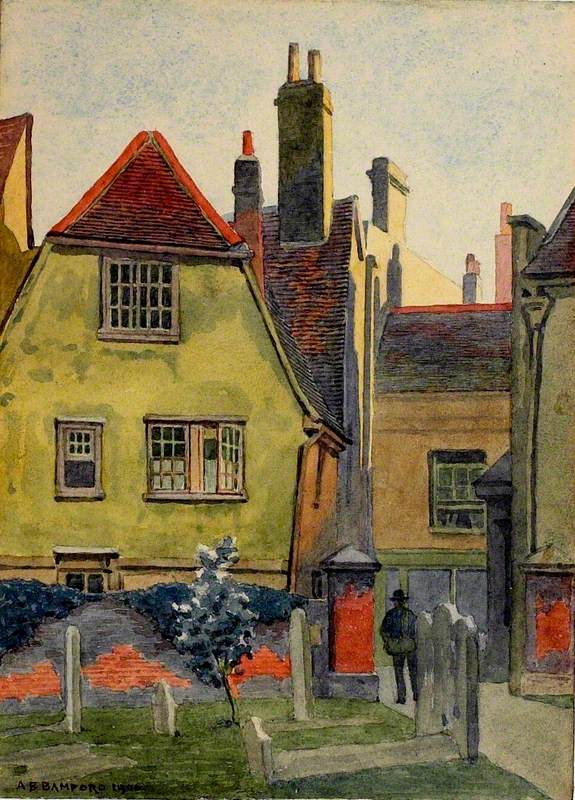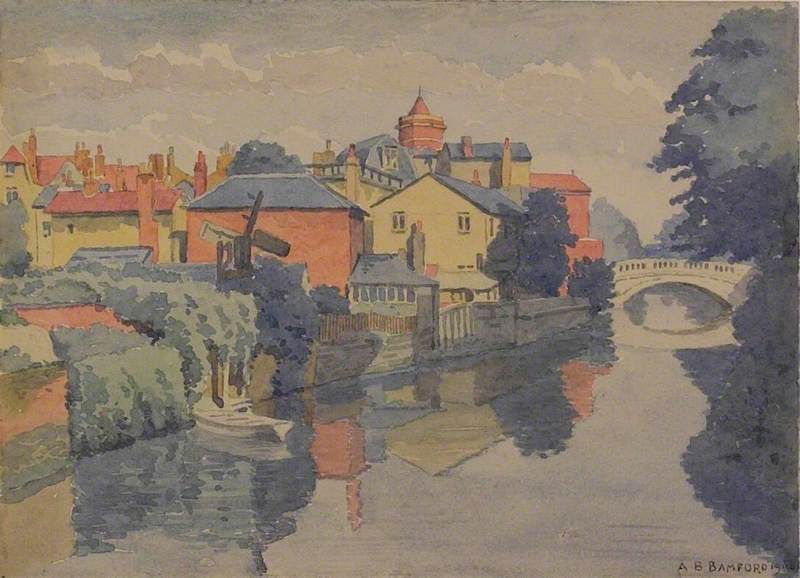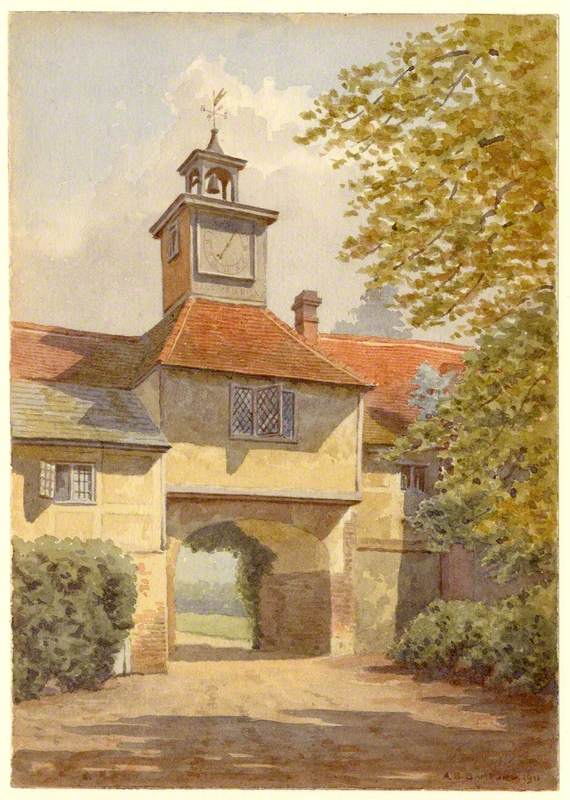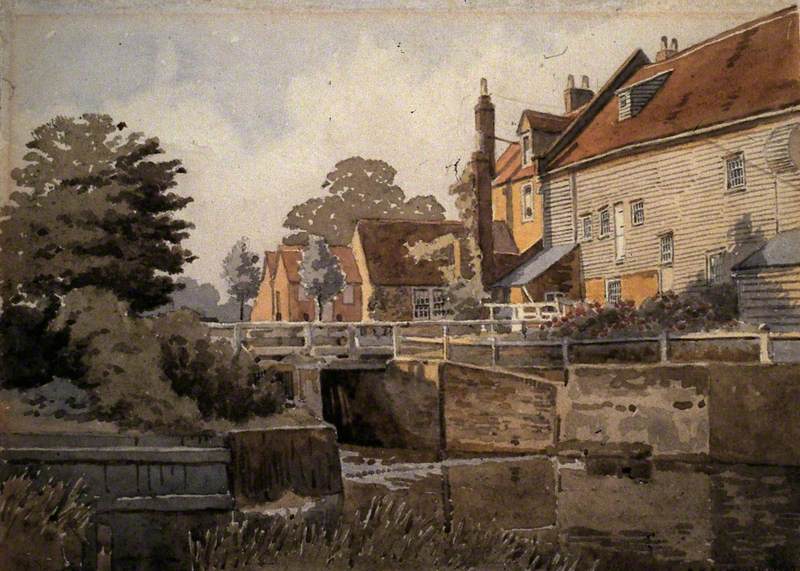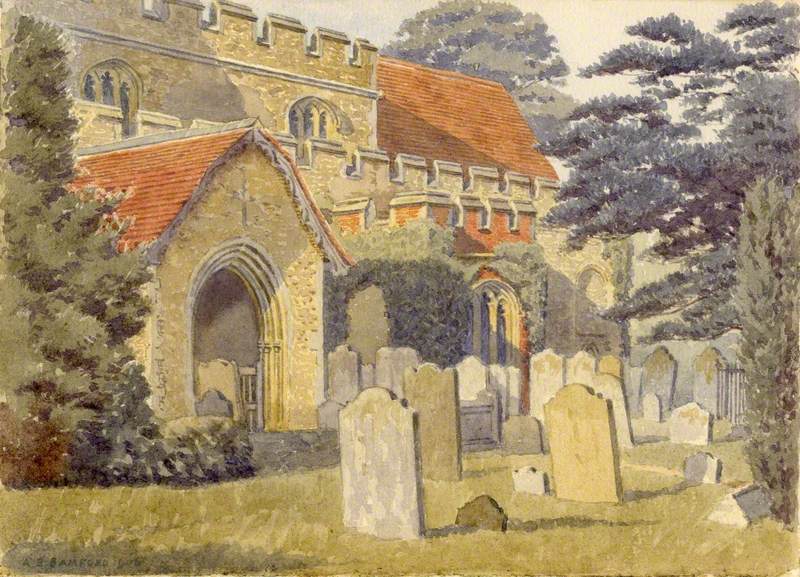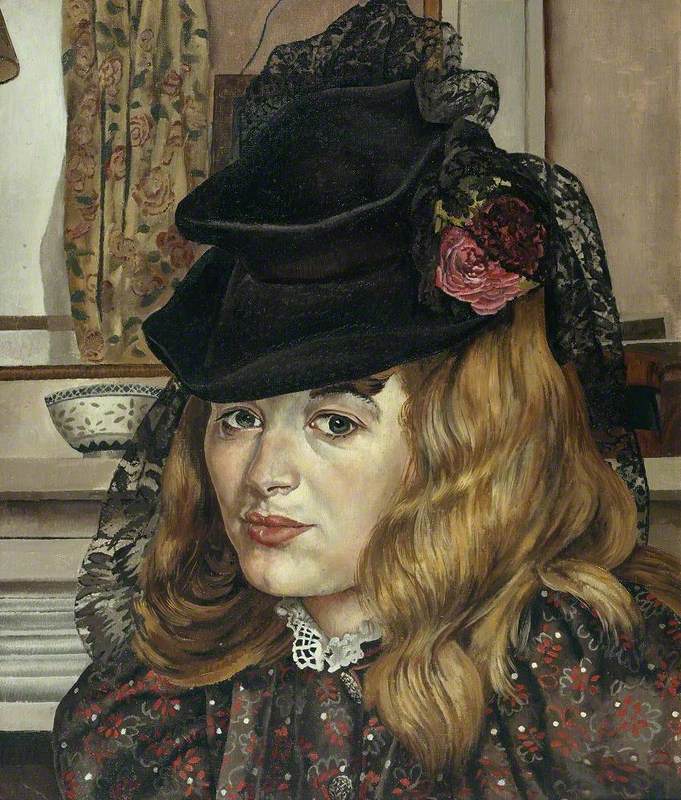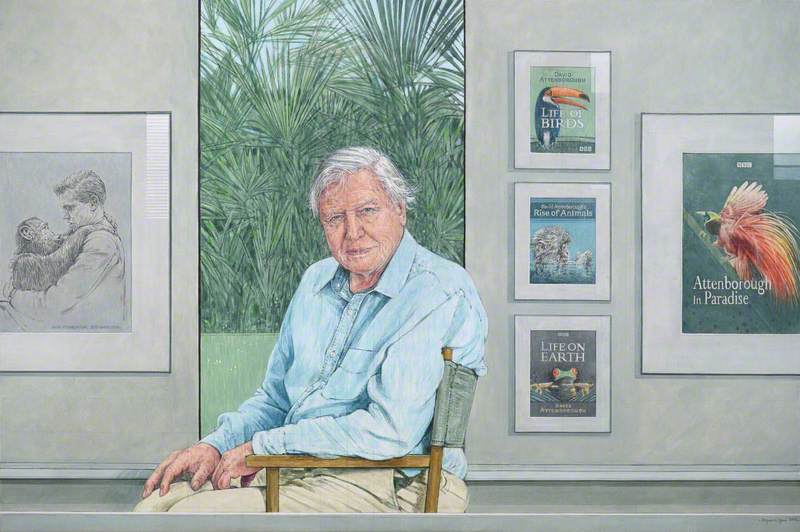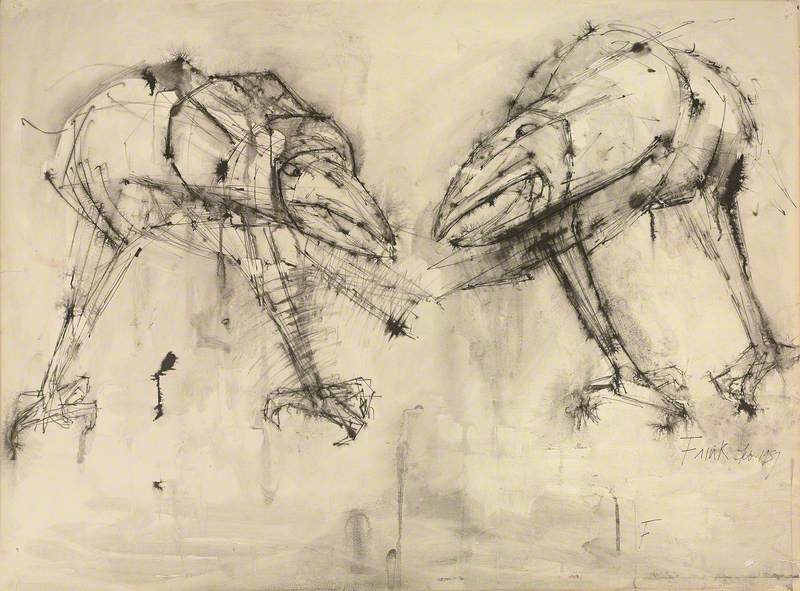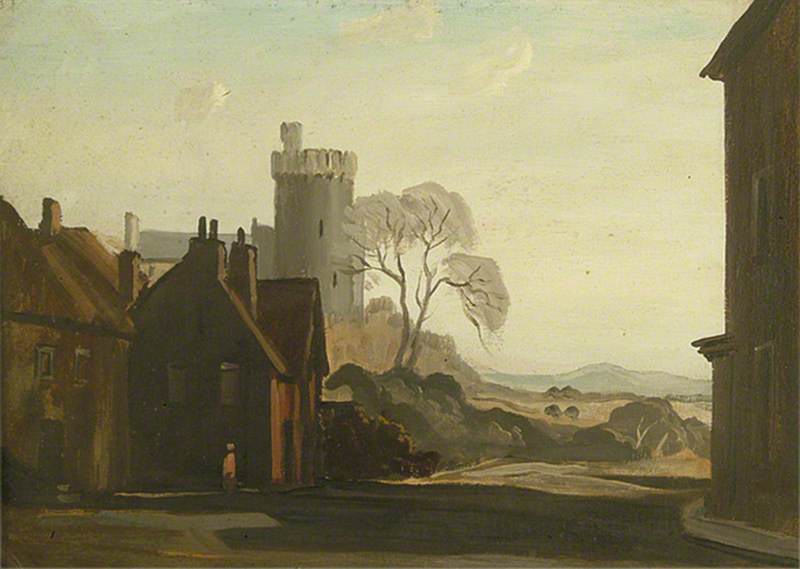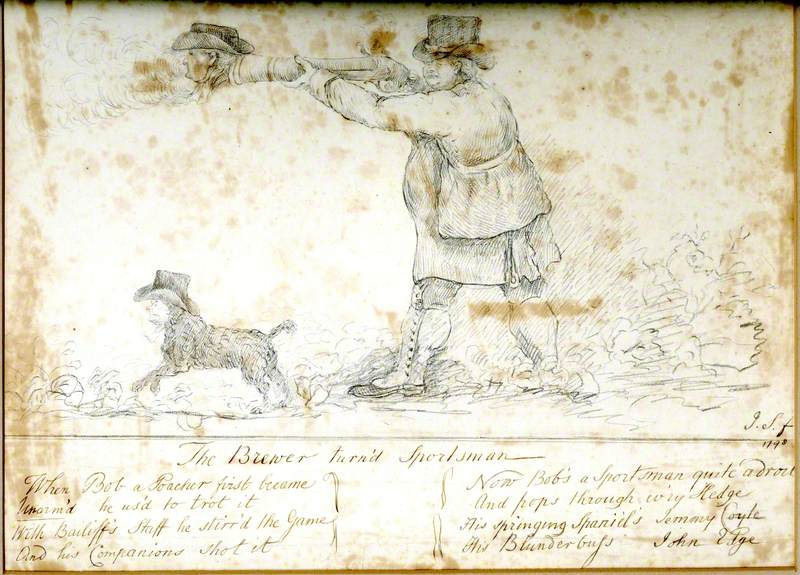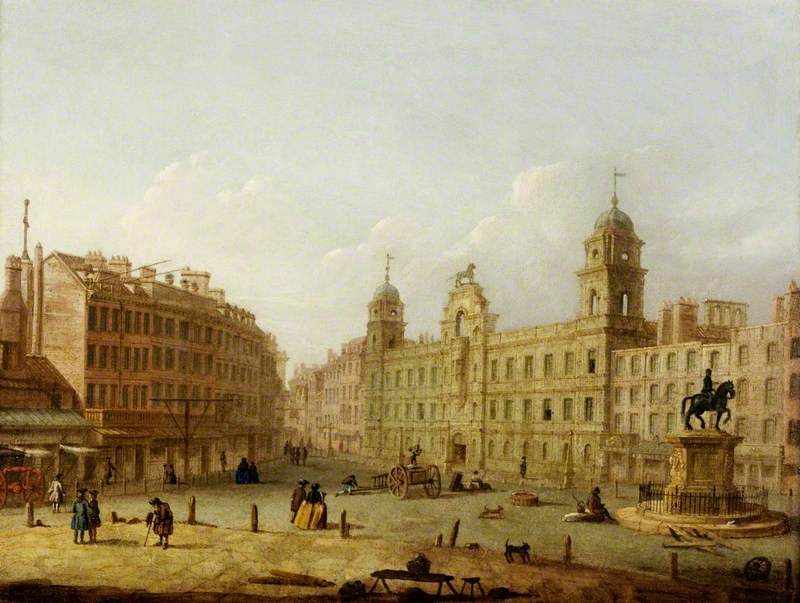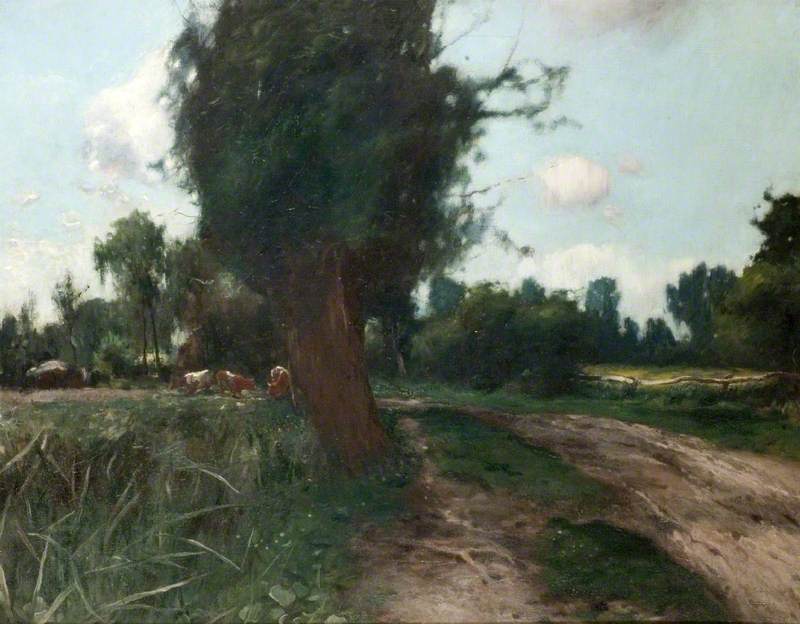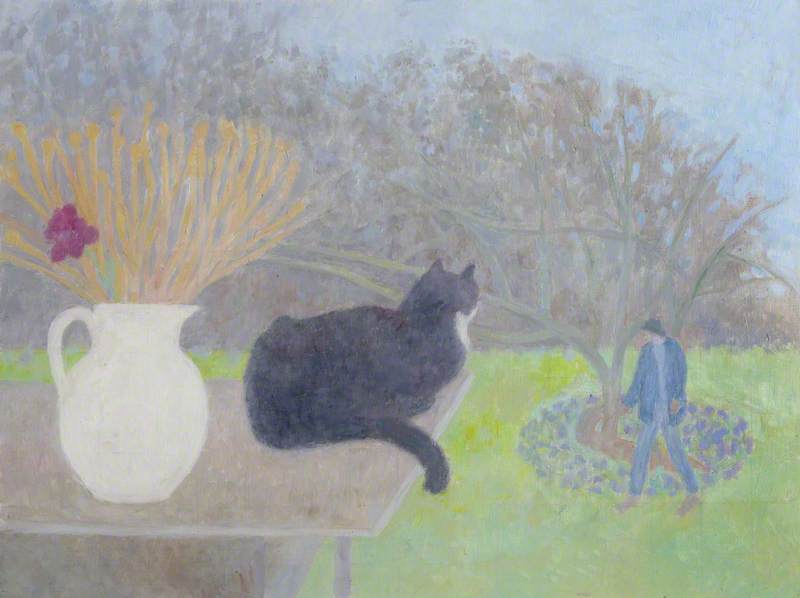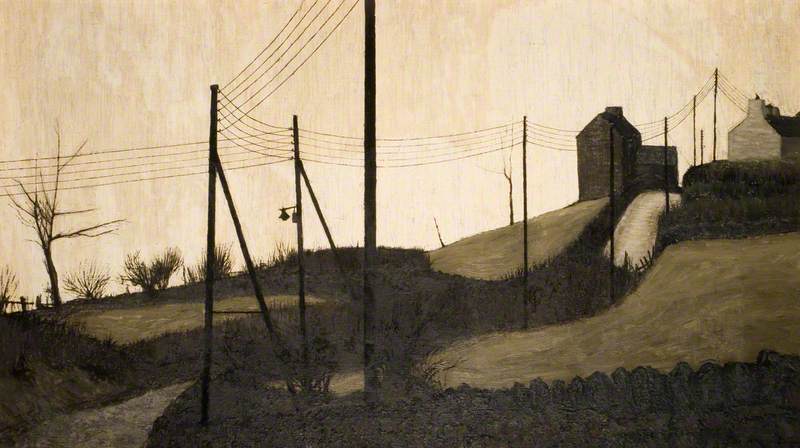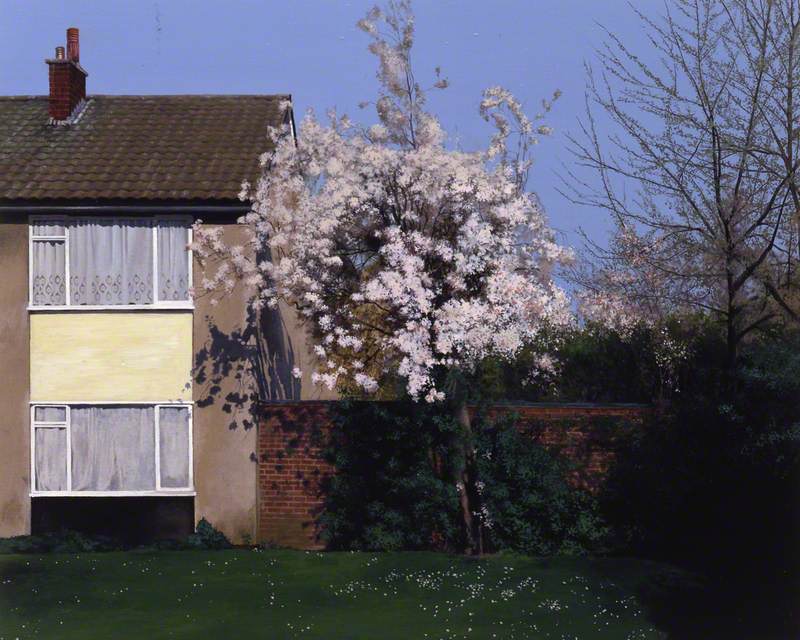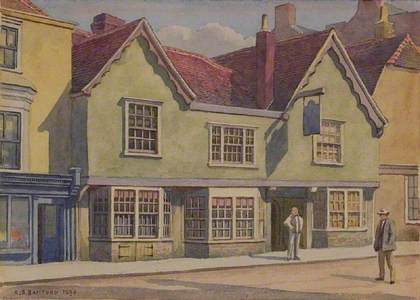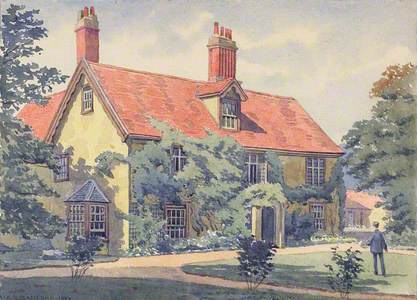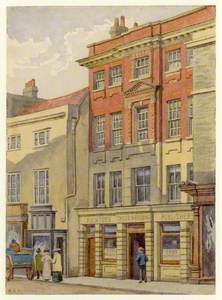Soldier-artist or artist-soldier
You may not have heard of him, but Alfred Bennett Bamford (1857–1939) was a hugely prolific watercolourist based in Essex. Like countless arts graduates before and since, Bamford had little choice but to spend much of his time not creating any art. After completing his studies at Heatherley’s School of Art he had a work exhibited at the Royal Academy in 1883, entitled The Chapel of St Erasmus. Bamford was still only 26 and would see his works exhibited at the Academy a further six times, but even then he evidently could not afford to identify himself solely as an artist: that same year he had been promoted to Lieutenant in the First Volunteer Battalion Regiment, the precursor of today’s Territorial Army.
Then, as now, an arts graduate like Bamford would have grappled with the relative incompatibility of his skills with the requirements of the job market. Glancing over what there is of a biography, I get a sense that he always circumvented this by compartmentalising his creative talent, as though he felt it would have been reckless not to.
It seems as if Bamford the Painter was no more intrinsic to his sense of self than Bamford the Soldier. One wasn’t more real than the other. And yet, considering his work – in all its prodigious and organised output – one gets a sense that the qualities that defined Bamford the soldier eventually fed into the qualities that defined Bamford the artist.
Early years
Bamford was born in Stanley Lodge, Eastern Road, Romford, in 1857. His father Charles was manager of Kemsley’s, the local auctioneers and estate agents. The Bamford family is thought to have originated from the north of England. Alfred took the maiden name of his mother Joanna Bennett to add to his surname, sometimes using them double-barrelled, but mainly signing himself ‘A. B. Bamford’ from the mid-1890s.
It’s not clear exactly when he enrolled at Heatherley’s, but during his time there he would have discovered a personal aptitude for watercolour. He almost certainly revered the work of one of the medium’s most renowned practitioners, John Sell Cotman. Like Cotman, Bamford would have been struck early on by an intriguing paradox with the medium: the more confident that watercolourists become, and the more swiftly and subtly their marks are applied, the more they find they are able to capture a feeling of stillness.
His chronology with the Volunteers suggests Bamford joined up around 1875, which was almost certainly prior his enrolment at Heatherley’s. This sequence suggests that the focus on the Regiment had come first, presumably in the eyes of his parents, and that the study of art was a concession on their behalf, or a statement of independence on his. The solitude and silence of watercolour was now his refuge from the responsibilities of drill and discipline.
After retiring from the service as an Honorary Major, aged 44, Bamford began to work as an art tutor. By 1905 he was married and settled in Chelmsford, where he had accepted the position of Art Master at the Chelmsford School for Girls. That same year Chelmsford Museum bought 57 of his works, in a purchase grant aided by the Victoria and Albert Museum.
Change in Chelmsford
Since the decline of the Roman Empire, Chelmsford had remained a relative backwater. At a casual glance, a map of the town from Bamford’s time appears barely altered from a map drawn up in the sixteenth century, with the same boomerang-shaped thoroughfare rising to St Mary’s Church. Characterised by its surrounding water mills and grain maltings, the town had continued through the nineteenth century relatively untouched by the Industrial Revolution, but change was now afoot. The arrival of Bamford in Chelmsford coincided with a gradual shift in the town’s atmosphere as it became an unlikely hub for the so-called Second Industrial Revolution.
The antique charm that lingered in Edwardian Chelmsford obviously had a novel attraction to Bamford. He must have also been aware of the irony that his own arrival was part of a population influx that was changing the town. Our notion of the picturesque is synonymous with that which is period: most amateur watercolourists would not, as a rule, set up their easels opposite multi-story car parks, or glass-fronted office blocks. When it comes to architecture, the painting of aged structures – such as churches, half-timbered cottages and ivy-strewn masonry – is what people intuitively do. While indeed this is what Bamford did in his many images of Chelmsford, he did so with a pointed concertedness. A census taken just after his arrival records a population of over 18,000, which showed a doubling of the 9,885 recorded in 1888, and was just the start of a continual trend up to and beyond the turn of the century.
Attracted by the vast acres of empty flat land in proximity to the capital, in the late nineteenth century three engineering companies established themselves within walking distance of each other, including the world’s first radio factory set up by the Marconi Company. The inevitable army of employees followed. The school where Bamford taught had itself opened to accommodate this new influx. The town’s boundary was extended twice before the Second World War. Bamford’s multiple images of ancient alehouses, stooping asymmetrical beams and sloping tiled roofs are all freighted with his awareness of what they are not.
Parade-ground discipline
The sheer volume of these images needs to be understood in terms of the urgency with which they were produced. Newly retired from decades of military service, Bamford now mobilised his artistic talent with parade-ground discipline. In their profusion, the images of the town can’t simply be understood as the leisurely work of an off-duty art teacher. It is as if every image was intended to comprise part of a pre-arranged operation to capture the atmosphere of a passing era.
Bamford had an exceptional command of watercolour. His painting of the facade of The Old Mansion House from c.1908 shows a tonal range that wouldn’t disgrace an accomplished oil painter.
Given his work as an art tutor, most of these images appear to have been produced during the summer breaks between terms. His version of Essex comes saturated in an unlikely Tuscan palette of umber tones and cerulean blue skies. A windless stillness hovers over his 1916 view of The Can from the Iron Bridge, recasting Chelmsford as an imaginary département of Provence.
You can almost hear the flies buzzing in the background of The Gatehouse at Ingatestone Hall, painted in the cracked earth heatwave of 1911, which glows like the cover of a children’s storybook.
But this oddly Mediterranean Essex was the only touch of artistic licence he would permit himself. Otherwise, Bamford never experimented with the watercolour medium. He never allowed it to take precedence over the lines of the initial drawing. They were always primarily works of historical record.
Artistic licence
Between his arrival in Chelmsford and the beginning of First World War, Bamford had produced an extensive document of the town and its neighbouring villages. In each of them, all signs of the newly emerging industries have been stringently avoided and excised. There are no chimneys, or factories – certainly no Marconi antennae. His figures amble with all the time in the world. There is a 1906 photo of the Shire Hall, which shows the faces of buildings emblazoned with advertising, gas lamps dotted along the pavement, a lady pushing her bicycle, flag masts rising into the air.
In Bamford’s painting from the same spot, in the same year, none of these elements appear. Too modern, it seems. Another 1860 photo of the mill at nearby Little Waltham happens to include the small-bricked engine house with its chimney attached to the right. Bamford excises this addition in his painting of the same building, made decades later, stopping abruptly at the edge of the timber-beamed mill house.
Bamford’s legacy
Bamford’s editing of these signs of modernity had nothing to do with any preference of taste in the art market, which had no relevance to him, but instead had everything to do with his project to record the pre-industrial past. It seems that as soon as they were completed the artworks were either sold or donated to museums, which must have always been his intention. In addition to the 57 works sold to Chelmsford in 1907, similarly large collections went to Romford, The Walker Art Gallery in Liverpool, Ilford Libraries, Valance House Museum in Barking, and The Royal Institute of Paintings and Water Colourists.
After a decade of teaching, and of painting the vanishing past, the present day intruded unavoidably into Bamford’s life. With the outbreak of war, he found himself posted to run a prisoner-of-war camp on the outskirts of town. This would have presented any serving officer with considerable and sensitive challenges, and yet I somehow find it easy to imagine the diligent Bamford, now approaching 60, reverting to military duty without a murmur. He continued to teach after the war, retiring in 1927.
Later he moved from Essex to Tattershall, near Chester, but not before leaving a gift of a further large group of works to Chelmsford Museum. He died on 21st October 1939, at the age of 82. The exact number of works by Bamford that exist is unknown, but he was undeniably the most prodigious artist working in and recording Essex during his life. His work offers an evocative sense of the atmosphere of the pre-industrial county, caught just as it was passing out of living memory.
David Roper, volunteer at Chelmsford Museum
